Camping inspiration: Exploring the Wales Coastal Way
Words and photos by Iain Duff
Camping Magazine editor Iain Duff makes an epic five-day journey along the Welsh coast following the 180-mile Wales Coastal Way.
Guide Contents
- Introduction: The Wales Coastal Way
- Planning for the journey
- The Plan: A Wales Coastal Way Itinerary
- Day 1: Pembrokeshire
- Day 2: St Davids to Aberaeron
- Day 3: Aberaeron to Dolgellau
- Day 4: Dolgellau to Aberdaron
- Day 5: An epic journey ends
- About Camping magazine
Introduction: The Wales Coastal Way
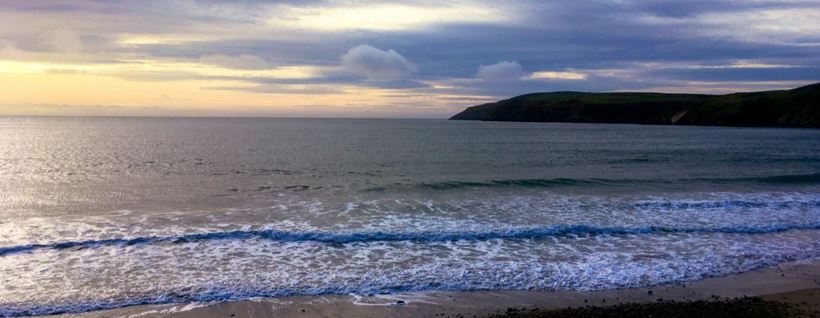
What is the Wales Coastal Way?
The 180-mile Coastal Way follows the coastline of Wales around Cardigan Bay, between St Davids in the south to Aberdaron in the north.
It is part of The Wales Way, a recently launched family of three national routes – which also includes the Cambrian Way and the North Wales Way.
The Coastal Way passes through some stunning scenery, as well as countless picturesque fishing villages, pretty harbour towns and traditional seaside resorts.
The most beautiful country in the world?
As you drive along, with glistening blue seas on one side and towering mountains on the other, it’s easy to understand why Wales is considered one of the most beautiful countries in the world.
Golden beaches, towering cliffs and hidden coves provide the backdrop to an epic road trip.
In summer, you could easily imagine that you’re driving along a Mediterranean coastal road as the sea shimmers in the sun.
But this is a place you can visit all year round. The mountains of Snowdonia are at their dramatic best in the winter, when they are topped with snow or shrouded in mist.
In spring, newborn lambs frolic in the countryside and in autumn the landscape becomes a dazzling kaleidoscope of colour, as the trees turn golden and purple heather abounds.
A rich history with majestic castles and churches
But as well as its natural beauty, Wales is a land with a rich history, boasting majestic castles and churches and an endless number of fascinating legends and myths.
The Coastal Way is a great chance to delve deep into that past and discover more.
Planning for the journey
To get the most out of a road trip along the Wales Coastal Way, you should plan in advance, whether you start in Aberdaron in the north and work your way south, or set off from St Davids and head north.

How much driving do you want to do?
The length of the trip will depend on how much driving you want to do in one day and how many nights you want to spend on campsites.
If you plan to complete the route in as short a period as possible you can limit each camping stop to one night, allowing you to do the route in four or five days, including your journey to the starting point and your drive home at the end.
But if you have more time available and you'd like to explore some areas in detail, you could choose to extend some of your stopovers to two or three nights each.
Book your campsites in advance
There are plenty of good campsites along the route but, at busy times, you might want to book a pitch in advance. This does mean you having to be a little less flexible, but it guarantees you will have somewhere to camp. Search here to find the right campsites for your trip.
The Plan: A Wales Coastal Way Itinerary
Our five-day plan
On this trip, we chose to complete the 180-mile route over five days, starting at St Davids and travelling northwards along the coast. We started by driving straight to St Davids, pitching up at a campsite nearby.
We spent another three nights camping as we travelled north along the coastal route, before setting off for home at the end of the trip.
Our Itinerary
DAY 1:
Home to St Davids
DAY 2:
St Davids to Aberaeron
St Davids - Porthgain - Fishguard - Cardigan - Aberaeron
DAY 3:
Aberaeron to Dolgellau
Aberaeron - Aberystwyth - Machynlleth - Barmouth - Dolgellau
DAY 4:
Dolgellau to Aberdaron
Dolgellau - Portmeirion - Porthmadog - Criccieth - Abersoch - Aberdaron
DAY 5:
Aberdaron to Home
Day 1: Pembrokeshire
Our camping trip along the coast begins at St Davids in Pembrokeshire, on the most westerly tip of Wales.
# St Davids
Our starting point, St Davids, is famous for being the smallest city in Britain, with a population of just 1,600.
The city status comes from its magnificent cathedral, which nestles in a hollow, alongside the ruins of the Bishop’s Palace, the dramatic backdrop for open-air theatre performances in the summer.
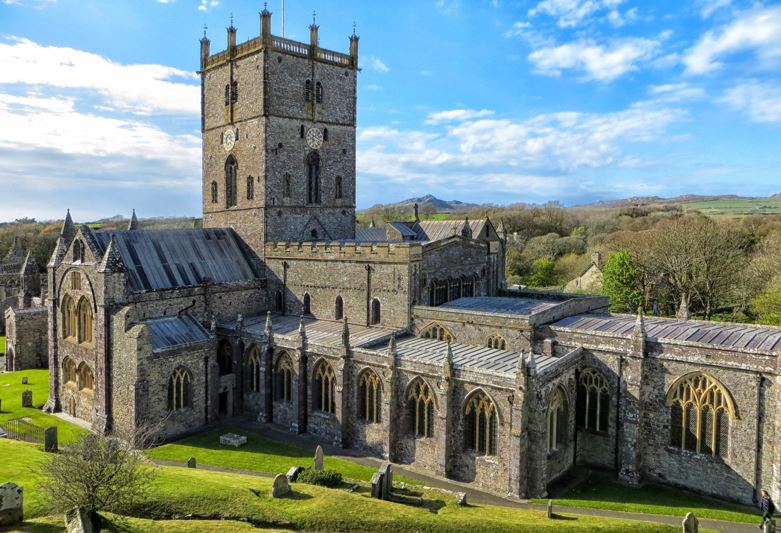
(Photo courtesy of Pixabay)
From the centre of the city, the cathedral is rather inconspicuous, with only the tower visible above the rooftops. But as we pass through the Tower Gate House, part of the original wall that once enclosed the city, the cathedral opens up before us in all its glory. It’s a splendid sight.
As a Christian settlement, the site dates back to the 6th century, when St David chose this remote peninsula to build his monastery. The present cathedral is the culmination of centuries of building, rebuilding and expansion that began in the early part of the twelfth century.
One of the most recent additions is the restored shrine to St David, which was unveiled in 2012, three centuries after it was destroyed in the Reformation.
The Cathedral Treasury provides a safe home for objects which tell the story of Christian worship at St Davids – including priceless relics recovered from the graves of four early bishops. The story of the cathedral is told in an exhibition in the gate house.
It's a short walk back into the centre of St Davids from the cathedral. As cities go, it may not be a thriving metropolis but it has its fair share of excellent places to eat and drink, as well as a good selection of shops and galleries.

After a gentle walk around town, we enjoy a tasty brunch (home-made, smoky baked beans on sourdough toast) at the Meadow Café before taking to the road.
Day 2: St Davids to Aberaeron
# Porthgain
Our stopping place the previous night had been at a campsite close to the tiny coastal settlement of Porthgain, about seven miles from St Davids, where we dined in the cosy Sloop Inn pub.
A return visit in daylight finds it to be a pretty little harbour village, with a superb fish and chip restaurant and a couple of art galleries.
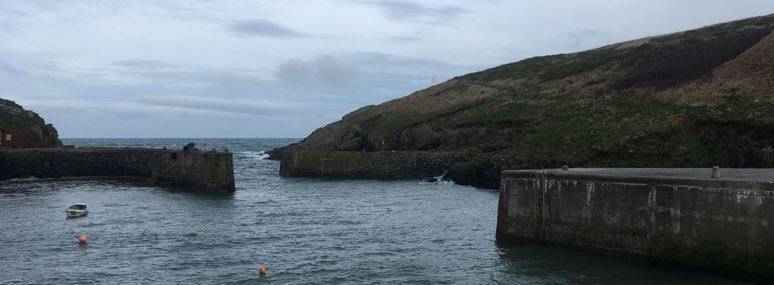
It’s also a great place to launch a kayak… or alternatively launch a walk along the Pembrokeshire Coast Path to Abereiddi Beach.
Here you’ll find the Blue Lagoon, a former slate quarry that was abandoned and flooded in 1910, and is now a watersports mecca.
Back on the Coastal Way, we head north through Pembrokeshire in the direction of our next overnight stop, the picture-postcard harbour town of Aberaeron.
# Fishguard
The route takes us through Fishguard, winding through Lower Town Fishguard and its cluster of quayside cottages and narrow roads, before crossing into Ceredigion.
# Ceredigion
The ancient town of Cardigan (Aberteifi in Welsh), sits on the estuary of the River Teifi at the base of Cardigan Bay. Cardigan Castle was the birthplace in 1176 of the Eisteddfod, the Welsh cultural festival that continues to this day and you can find out about the history of the gathering in the present day “castle”. In reality the building is more of a mansion house than a traditional fortress but, that said, if battles and conflict are your thing, you won’t be disappointed.
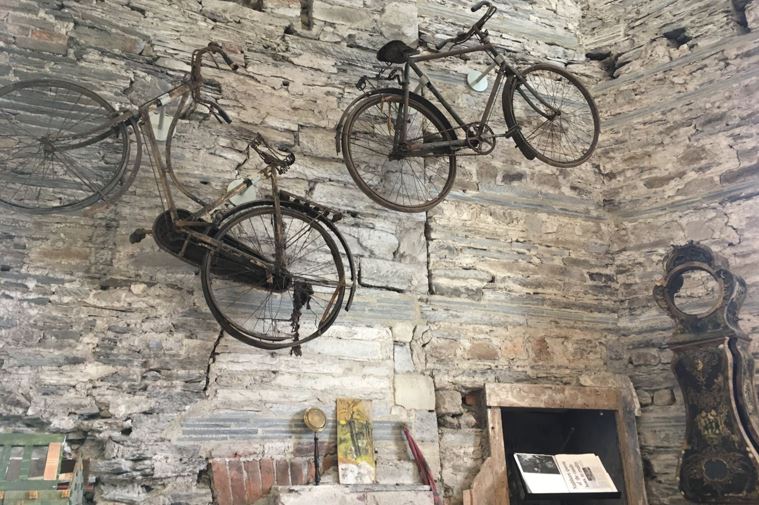
The castle has a bloody history that dates back to medieval times and reflects the somewhat “uneasy” relationship between the Welsh and the English.
We explore the medieval walls and the castle remains, before touring the Georgian mansion, where the recent history of the castle is told.
It’s a lot less violent than the tales of the brutal clashes of 900 years ago, but no less fascinating. The current edifice was built in 1808 and its last private owner, Barbara Wood, moved into the house with her mother in the 1940s.
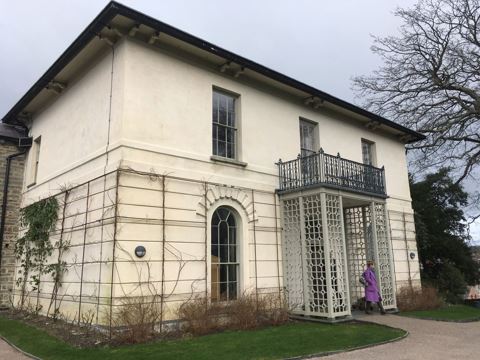
Sadly, over the years the mansion fell into disrepair and was declared unfit for human habitation in 1984.
Eventually Miss Wood sold the building to the local council in 2003 and, after an extensive £12million restoration, it reopened as a heritage attraction in 2015.
While you're in the area, make time for a visit to idyllic Mwnt Beach. From the summit of the hill that rises above the sands, there are sweeping views across Cardigan Bay. The beach itself is reached by steps alongside a tumbling stream.
This whole stretch of coast is incredibly rich in wildlife, from seals to puffins – and if you are lucky you’ll see Britain’s biggest pod of dolphins, who spend the summer in the bay, around New Quay. The Welsh Wildlife Centre, near Cardigan, is also well worth a visit.
# Aberaeron

(Photo courtesy of Andy Newton / Unsplash)
Once a busy fishing port, Aberaeron is now one of Ceredigion’s most popular holiday resorts, packed with fashionable places to eat and a good selection of independent shops selling crafts, clothes, and local produce.
The harbour is lined with a fine collection of brightly painted Regency-era buildings, including the highly Instagramable Harbourmaster Hotel, renowned for its top-notch gastropub-style menu.
In fact, Aberaeron is quite the foodie town, with the Cardigan Bay Seafood Festival held in July on the quayside.
The town's two beaches are always popular and it is on the Ceredigion section of the Wales Coast Path, which passes along the north beach.
If you enjoy a walk but don't fancy taking on something as daunting as the coastal footpath, there is a town trail map available from the local tourist office, which allows you to discover the town's heritage as well as stretching your legs.
You won't have any difficulty finding a good campsite around here. It's a popular visitor destination and there's no shortage of places around New Quay and Aberaeron to spend the night with your tent.
Day 3: Aberaeron to Dolgellau
# Aberystwyth

(Photo courtesy of Andrew Jephson / Unsplash)
Further up the coast, the cosmopolitan university town of Aberystwyth with its independent shops, trendy wine bars and an award-winning Farmers' Market, is worth a visit. There's lots to do, including the electric cliff railway which hauls you up Constitution Hill at a stately four miles an hour.
At the top is the biggest Camera Obscura in the world, which gives you a bird's-eye view of the surrounding land and seascape.
A few miles north of Aber (as the locals call it), is the village of Borth, which boasts a Blue Flag beach with more than two miles of golden sand. On the shore between Borth and Ynyslas, the eerie remains of a submerged forest can be seen at low tide.
# Machynlleth
Machynlleth is, on the surface, a traditional market town, complete with busy high street and clock tower. But there's more to this place than meets the eye with a massive focus on the arts, nature and sustainable living.
The annual comedy festival brings thousands of visitors to the area in early May.
Back on the coast, the Talyllyn Railway, a narrow gauge steam railway that runs seven miles from Tywyn to the village of Abergynolwyn, is a train-lover's dream.
Unfortunately the trains aren't running during our visit, so after tea and cake in Machynlleth we head back onto the road for our next overnight stop at Dolgellau in the Snowdonia National Park.
Snowdonia is a haven for outdoor enthusiasts, especially those who enjoy the more active pursuits. But there's another side to this part of the world that is often overlooked.
Snowdonia boasts 200 miles of glorious coastline where you'll find secluded bays, sheltered harbours and vast open beaches. The pretty villages and lively resorts offer places to enjoy peace and quiet or action-packed days and nights.
# Barmouth

(Photo courtesy of Pixabay)
Barmouth is a popular coastal resort in southern Snowdonia, with big beaches, a picturesque harbour and splendid views.
The sunsets over Barmouth can be spectacular and you'll find all the traditional seaside attractions.
# Dolgellau
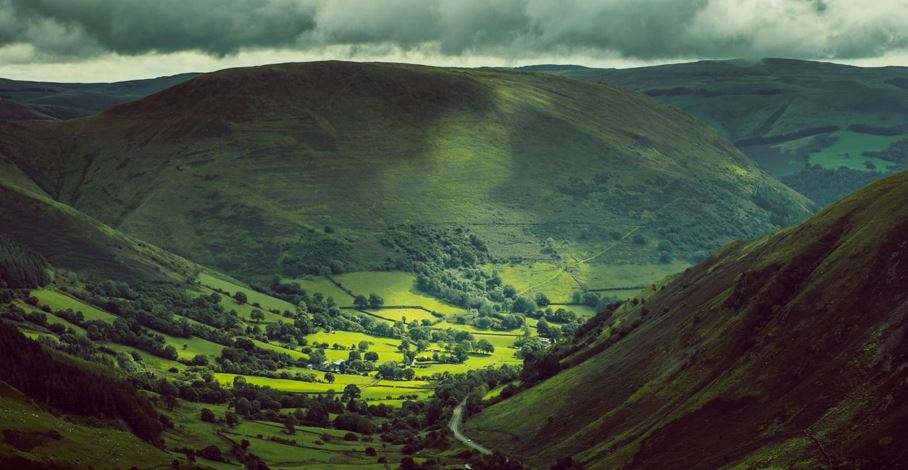
(Photo courtesy of Joseph Reeder / Unsplash)
A few miles inland, Dolgellau is a bit of a hidden gem. It sits in the shadow of Cader Idris, arguably the second most popular mountain in Wales after Snowdon, and is an excellent base for exploring the whole of the region.
Mountain biking and walking options here are superb and there's plenty of history to discover in its narrow streets and squares. Incidentally, if, like me, you enjoy a hot curry, definitely make time to eat at the excellent Lemon Grass restaurant. The Naga Chicken is outstanding – if you dare!
Day 4: Dolgellau to Aberdaron
# Portmeirion
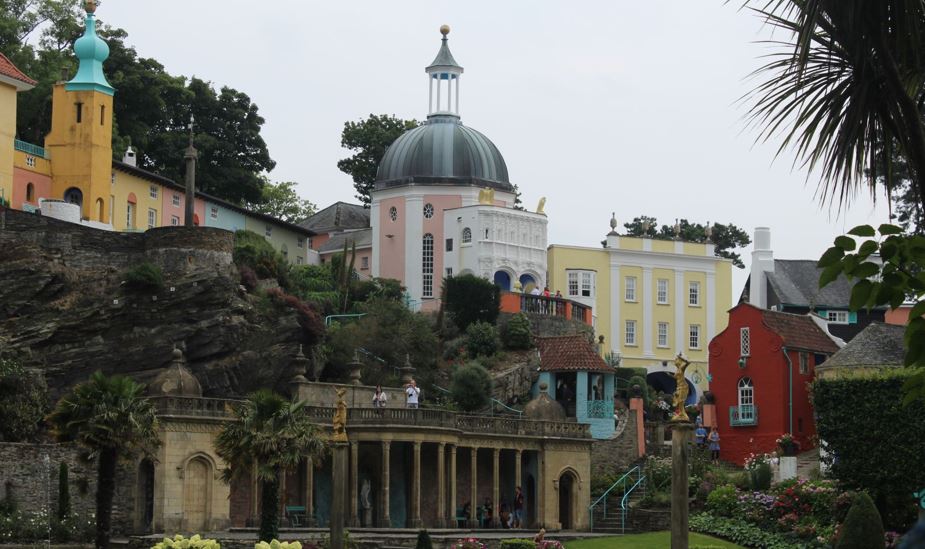
The following day, after an hour's drive up the coast, we reach what would prove to be one of the highlights of the trip, the truly extraordinary village of Portmeirion.
Set on its own private peninsula, this is certainly not your typical Welsh village. Designed by architect, Sir Clough Williams-Ellis, in the 1920s, it represents his fantasy of a classical Italianate village in the Mediterranean, transplanted to a romantic clifftop location.
If you think it looks familiar, Portmeirion has been used as a location for countless TV shows, films and music videos but it is most famous as the place where the surreal 60s spy drama The Prisoner was filmed.
The 50 pastel-painted buildings and the grand piazza are a treat for the eyes, and there are 70 acres of woodland and subtropical gardens filled with exotic plants.
There are paths to explore, and when the tide is low you can walk along the sands.
# Porthmadog
A few miles from Portmeirion, the seaside resort of Porthmadog is the biggest town in this part of north Wales.
# Criccieth
We follow the coast northwest from here and encounter the pretty seaside village of Criccieth, which has its own castle perched high above the bay.
From here, we carry on to the Llŷn Peninsula, that stretch of land that looks on a map like a crooked finger pointing accusatorily at the southeast corner of Ireland.
#Abersoch

(Photo courtesy of Unsplash)
Next stop is the seaside village of Abersoch. With its great beaches and fashionable bistros, this is a popular spot for camping and makes a superb base for exploring this part of the world.
Rich in Welsh culture, the Llŷn Peninsula's coastline has been a protected Area of Outstanding Natural Beauty for over 60 years and its quiet winding roads are a joy to drive on. So much so, that we reach our final destination, the coastal village of Aberdaron, before we know it.
Day 5: An epic journey ends
# Aberdaron
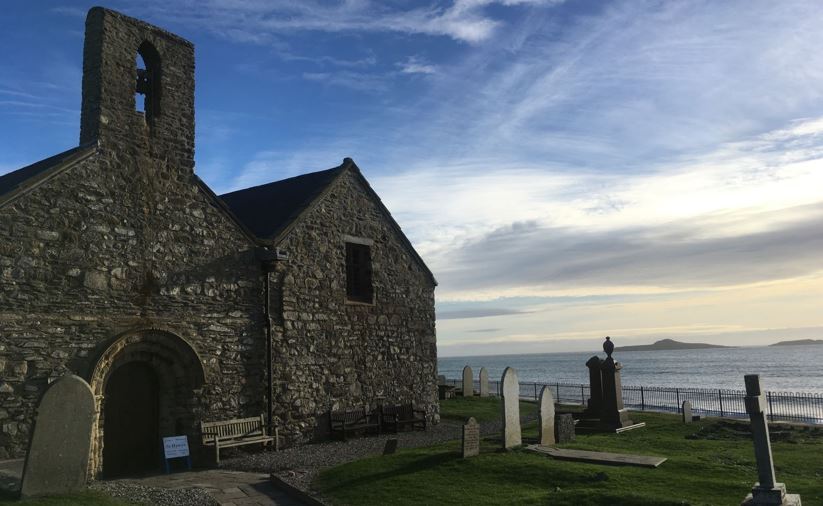
The final day is spent enjoying Aberdaron ahead of our drive home. After a walk on the beach, we pop into the National Trust's new interpretation centre, Porth y Swnt, which uses poetry and art installations to provide an insight into Llŷn's special landscapes, seascapes and rich cultural heritage.
Sunday carvery at Gwesty Tŷ Newydd comes with a sea view. Like all the best eateries in this part of the world, the food is home-cooked and locally sourced and there's lots of it.
After another brisk stroll on the sandy beach to walk off the effects of the roast lamb, it's time to pack up for the last time and set off for home. But not before one last walk around the village.
Our trip had started at a cathedral so it seems fitting that it should end at another place of worship, the “Cathedral of Llŷn”, St Hywyn's Church, which sits yards from the beach.
With waves crashing on the shore and Ynys Enlli (Bardsey Island) rising from the sea in the background, it's a suitably idyllic spot to end our epic journey.
Finished reading?
Want more great UK travel and holiday ideas? Our UK camping destination guide is full of inspiration and advice.
Expert Camping advice to your door!

Camping magazine has been the voice of campers for over 60 years!
Camping is the UK's only magazine devoted to the wonderful world of life under canvas and the freedom it brings. Every issue is packed with inspirational travel, the top camping sites to stay on, reviews of the latest tents, camping gear reviews, practical help and much more to help you get the most out of your camping adventures.
Want to know more about Camping Magazine?
About Camping Magazine








Recent Updates
Camping barbecue: our guide to cooking up a storm this summer
Is there anything more British than sausages grilled on an open flame and dropped on wet grass? Camping and barbecues go hand in hand, which is why ...
Our family camping checklist: everything you need to pack
Sure, you’ve packed the tent and the sleeping bags – but what about slip-on shoes and glow sticks? These are ...
Our guide to planning the perfect camping road trip
Roll down the window, pop on those shades and crank up the volume – it’s time for a road trip. Get ready for ...
Camping in Europe: our 12 top tips
If you’ve not camped in Europe before, there’s a few tips and tricks you’ll need to avoid some continental ...
Solar power for camping: all you need to know
Staying connected in the great outdoors is easier than ever with a solar charger – or is it? How reliable are ...
Wild camping kit list: everything you need for your next adventure
Make sure you’re ready for anything with this list of lightweight camping gear and clothing, including ...
Camping furniture: all you need to know to make your tent a cosy haven
We delve into the essentials of camping chairs, camping tables, and kitchen and bedroom furniture, ensuring ...
Camping lights for tents: What you need to know
We will guide you through all the lighting options available for you and your tent, including interior ...
Camping kitchen: all you need to know
In the great outdoors, a well-equipped camping kitchen transforms mealtime into a delightful adventure ...
How to pack away your camping gear for winter
A complete guide to packing and storing your gear at the end of the season ...
Other Articles
Camping guide to trailers
Trailer stash or trailer trash? Being able to carry lots of other gear when you go camping isn’t such a bad idea, is it? Nick Harding looks at the ...
Winter camping: all you need to know to keep warm
Winter doesn’t have to mean the end of the camping season. With good preparation and the right gear, there’s ...
Camping toilets: a complete guide
If you are wild camping, camping off-grid or the campsite you book onto doesn’t have toilet facilities, you ...
Top tips for camping in windy weather
How to make sure your tent stands up to gusty conditions ...
Camping tents: a complete guide
If you're considering buying a camping tent, whether it's your first time or you're a seasoned camper, making ...
Camping sleeping bags and beds: a complete guide
When it comes to camping, there's one essential item that can make or break your outdoor adventure: the ...
Camping gas: how to use gas on the campsite
A complete guide to using camping gas appliances safely on the campsite, from choosing the right stove to ...
Camping storage: a complete guide
Having problems knowing where to put all your gear when you're camping? Read our top tips and see some great ...
Camping electric hook-up: a complete guide
This is everything you need to know about using electricity on a campsite, including how to hook up ...
How to pack all your camping gear into your car
Planning a family camping holiday? Find out the best way to fit all the kit you need into your car boot, roof ...